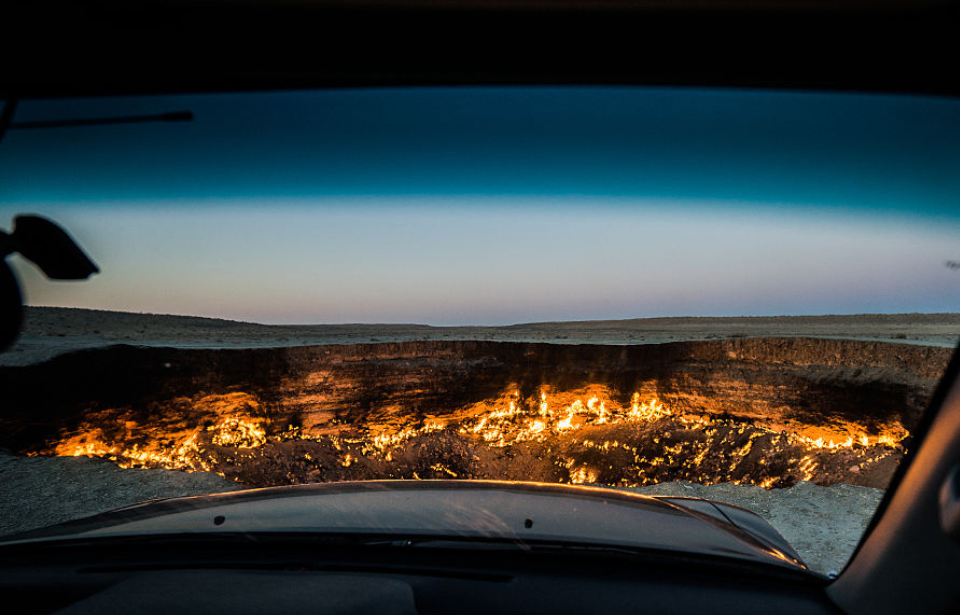It has been announced that the Gates of Hell, a sinkhole in Turkmenistan that has been on fire for 50 years, will be put out. However, will this tourist attraction really be extinguished when the same promise was made a decade ago and never actioned?
After all, this new declaration of intent came from a president who, in 2019, drove doughnuts in a rally car around this very landmark to disprove rumors that he was dead.
An amazing spectacle
In the Karakum desert in Turkmenistan, there is a massive burning hole that measures about 70 meters (229 feet) wide and 20-30 meters (65-98 feet) deep. Located 260 kilometers (160 miles) north of the capital, Ashgabat, this sinkhole is also known as the Darvaza gas crater after a nearby village.
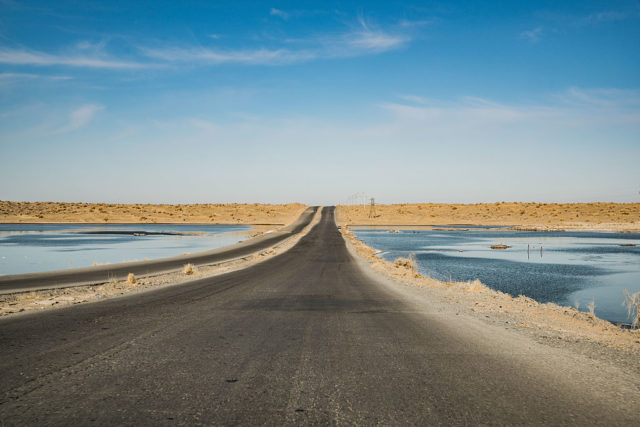
This deep pit of flaming gas and ash gives a permanent yellow-orange glow to the night sky. The sight is described by CTS News: “Flames dance out of cracks in its floor and around the sides, and a burning blast of air emanating from the pit shifts with the wind. The extreme heat and the roar of the flames have a mesmerizing effect.” Atlas Obscura adds that “it smells faintly of propane, and it’s loud, like a jet engine revving up.”
How the gate was “opened”
No one knows exactly how the Gates of Hell came to be. The most widely accepted origin story is that it was formed in 1971 when the Soviets were carrying out drilling operations in the area, looking for oil.
According to Turkmenian geologist Anatoly Bushmakin: “The boring equipment suddenly drilled through into an underground cavern and a deep sinkhole formed. The equipment tumbled through but fortunately no one was killed.” The Soviets were worried about a massive gas leak, so they set the sinkhole on fire. The thought the gas would burn off in just a few weeks, but the crater is still going 50 years later.
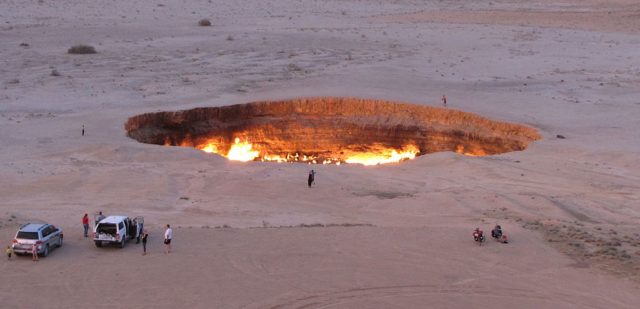
According to Atlas Obscura, local geologists have a different origin story, one which they related to George Kourounis, an explorer and storm chaser who became the first man to descend to the bottom of the crater in November 2013: “They told me rather that the crater actually formed in the late 1960s and wasn’t lit on fire until the 1980s.” With no written records substantiating either event, we might never know for sure.
Only those who know where it is can take you there
Despite being one of the most famous sinkholes in the world, there are no road signs to its location. Instead, those interested in seeing it must employ local guides to take them on a three-and-a-half-hour drive along dirt roads.
Sometimes, yurts are placed nearby so visitors can stay over, and in 2018, it was an overnight stopping point in the Amul-Hazar automobile rally.
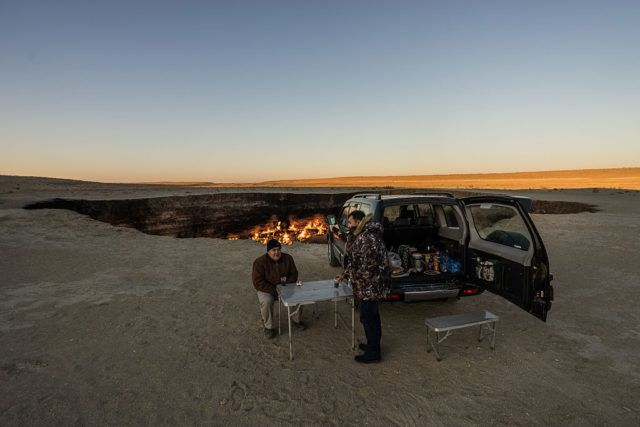
Visitors expect to see the devil and feel like praying
In 2014, the country’s tourism officials announced plans to develop the area for adventurous visitors. That could be quite a challenge since, according to CTV News, Turkmenistan is one of the most isolated countries in the world and only has about 12,000-15,000 tourists each year. To put that in context, Disney World draws around 58 million visitors a year and the Empire State Building has four million visitors a year. Even in 2020, in the middle of the pandemic, Stonehenge in England attracted approximately 315,000 people (down from a peak of 1.6 million in 2019).
Gozel Yazkulieva, a 34-year-old from Ashgabot who visited the crater, said: “It takes your breath away. You immediately think of your sins and feel like praying.” George Kourounis agreed when he said: “you almost expect Satan himself to come jumping out of the fire with his horns and tail and pitchfork and start doing a dance and challenging you to a violin duel.”
The fires must be put out
When 220,000 acres (90,000 hectares) of the desert were turned into a state nature reserve in 2013, Ovez Kurbanov of the National Institute of Deserts, Flora and Fauna explained that this was to “preserve one of the largest deserts on the planet and solve its environmental problems.” He also hoped that the crater would be “hugely interesting to both people who love travel and to researchers in various areas.”
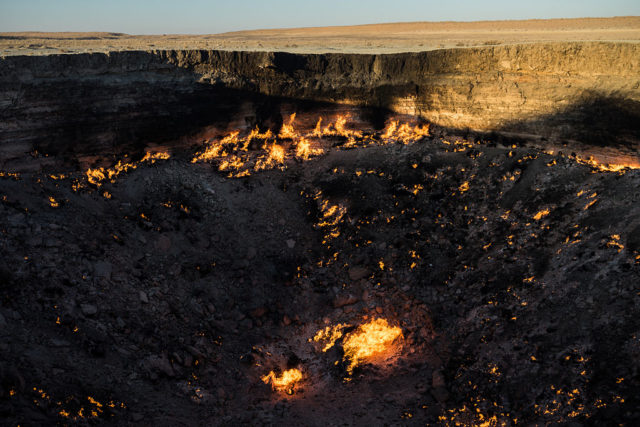
On January 8, 2022, Gurbanguly Berdymukhamedov, the president of Turkmenistan, declared that the government must find a way to extinguish the fire because it “negatively affects both the environment and the health of people living nearby.”
However, Gianluca Pardelli, founder of Soviet Tours and also a consultant for Atlas Obscura, observed “There is no one nearby.” Since the president also said: “We are losing valuable natural resources for which we could get significant profits and use them for improving the well-being of our people,” it’s possible that other more economic factors are at play in this decision.
This isn’t surprising, as gas is big business in the country. Turkmenistan has the fourth-largest reserve of natural gas, with China being the main buyer. A 7,000-kilometer-long gas pipe runs from the country to Shanghai.
How do you extinguish the flames of Hell?
But extinguishing the flaming pit might not be as straightforward as people think. When Kourounis descended to the bottom of the crater, he dug up some soil samples to return to geologists on the surface so they could look for life. (They did, in fact, find some simple organisms like methane oxidizers, thermophiles, and spore-forming bacteria in the samples, proving that life will always find a way.)
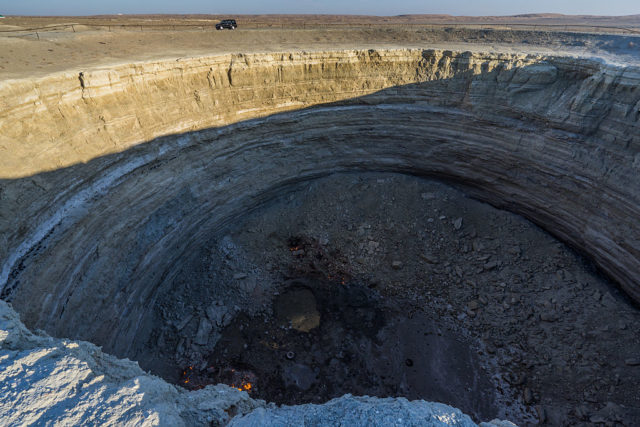
Kourounis related his first-hand experience: “As I was digging into the ground to gather these soil samples, fire would start coming out of the hole I just freshly dug because it was creating new paths for the gas to come out of the crater. So even if you were to extinguish the fire and cover it up, there’s a chance that the gas could still find its way to the surface and all it would take is one spark to light it up again.”
A previous promise and doughnuts around the Gates of Hell
In 2010, President Berdymukhamedov issued a similar declaration that the Darvaza gas crater would be extinguished. But for unknown reasons, this never happened.
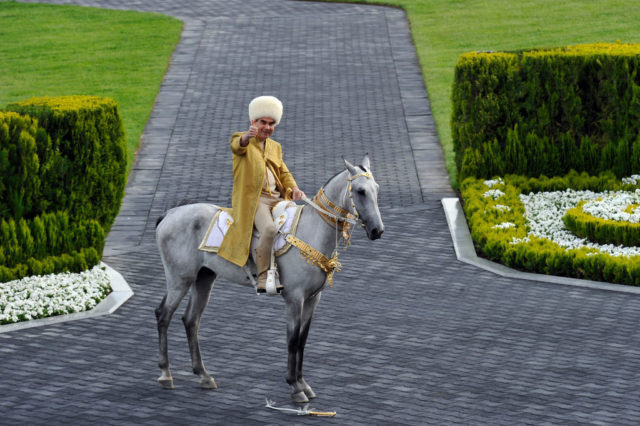
Perhaps he was grateful for this inaction when, in August 2019, he had himself filmed doing “doughnuts” around the Gates of Hell in a rally car. It was a stunt designed to discredit media rumors that claimed he had died because he hadn’t appeared on television since July of that year.
With this new declaration of intent, the world will now be waiting to see whether a fire that has been burning for half a century will finally be extinguished.
